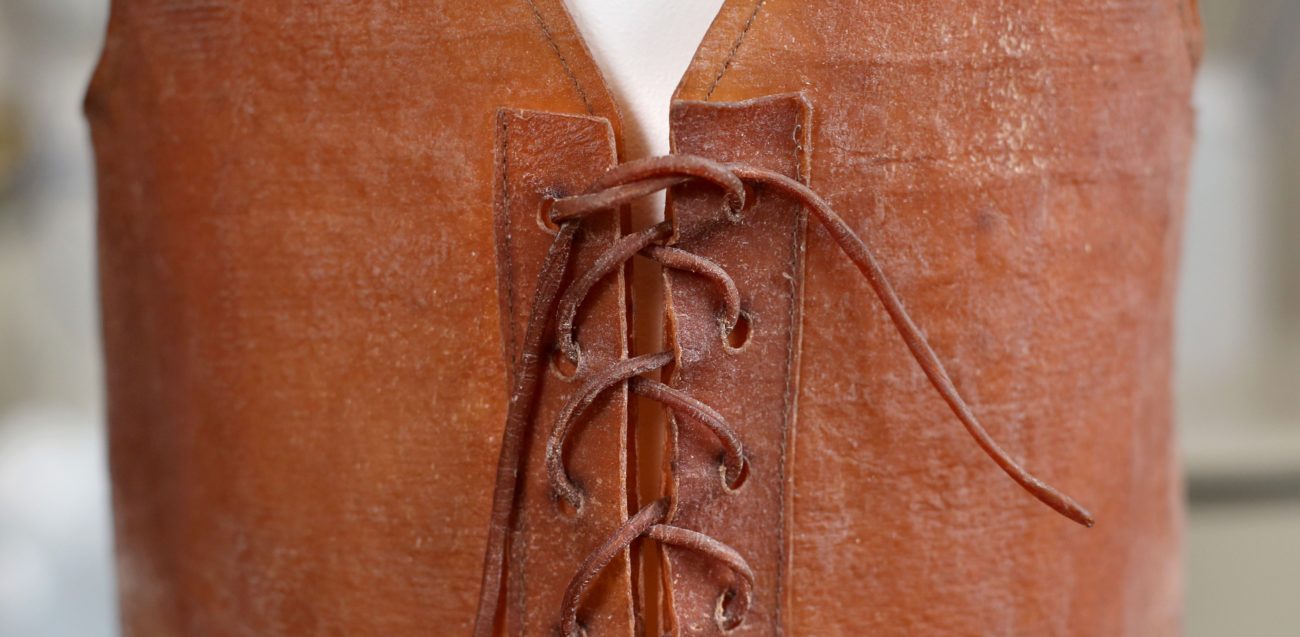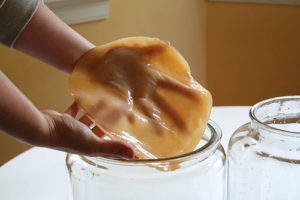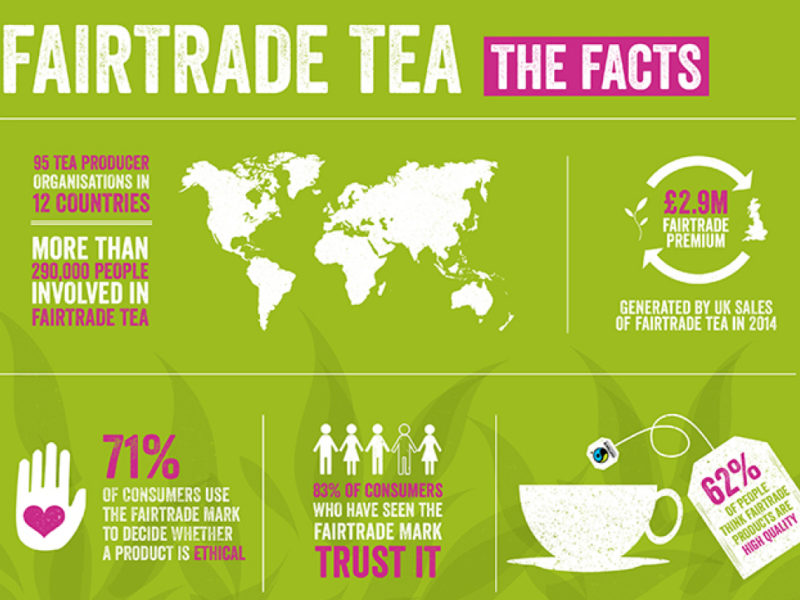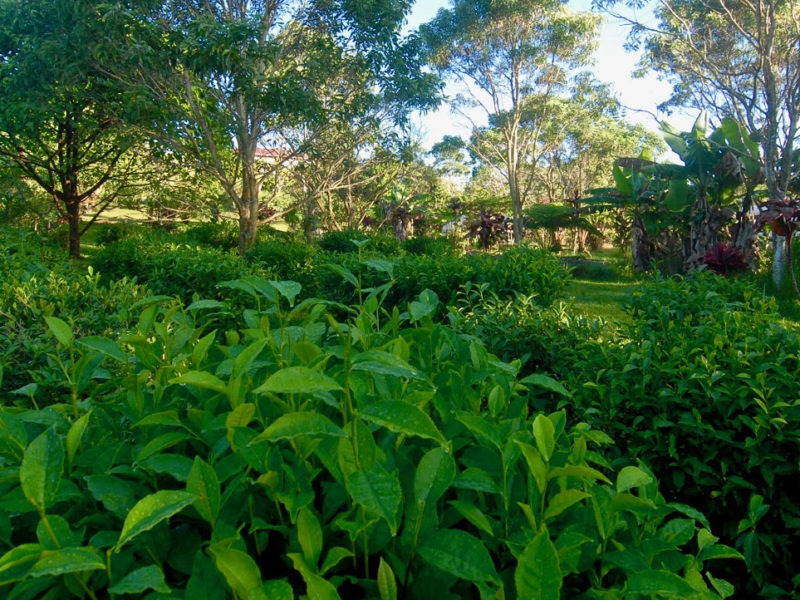
Abbigliamento biodegradabile, scarpe fatte da sottoprodotti del tè
1 mag 2016
WASHINGTON: Gli scienziati hanno sviluppato un nuovo simil-pelle, biodegradabile, utilizzando sottoprodotti di tè per vestiti, scarpe e borse. Un’ innovazione che potrebbe contribuire a ridurre i rifiuti generati dall’industria della moda.
I ricercatori della Iowa State University hanno sviluppato una pellicola gelatinosa composta da fibre di cellulosa – un sottoprodotto di tè Kombucha – che si nutre di una miscela di aceto e zucchero.
La pellicola viene coltivata utilizzando una colonia simbiotica di batteri e lieviti (Scoby).

Secondo Young-A Lee, professore associato alla Iowa State University, le proprietà di questa pellicola Scoby sono simili alla pelle una volta raccolto ed essiccato, e può essere usato per fare vestiti, scarpe o borse.
Il materiale è stato testato per altre applicazioni, come ad esempio cosmetici, alimenti e tessuti biomedici per la medicazione delle ferite, ma è relativamente nuovo per l’industria dell’abbigliamento.
Il fatto che la fibra sia 100% biodegradabile è un vantaggio significativo per il settore della moda, che per sua natura genera molti di rifiuti, sostiene Lee.
“Le aziende di moda continuano a produrre nuovi materiali e abbigliamento, di stagione in stagione, di anno in anno, per soddisfare il desiderio e le esigenze dei consumatori”, ha detto Lee.
“Pensate a dove, al fin fine, questi capi ed oggetti finiranno: come rifiuti. Questi occuperanno enormi spazi sotterranei della Terra come altri rifiuti”, ha detto.
La fibra di cellulosa riduce i rifiuti creando un ciclo continuo di riutilizzo o rigenerazione, il cosiddetto cradle to cradle.
Anche se i vestiti vengono riciclati o riproposti, alla fine finiscono nella spazzatura.
Lee prevede un tessuto realmente sostenibile e biodegradabile ed in grado di nutrire il terreno, piuttosto che occupare spazio in una discarica.
Scoby dà nuovo scopo per il sottoprodotto del tè, diminuendo la dipendenza del settore della moda da materiali non rinnovabili.
Lavorare con una nuova fibra non è privo di sfide. I ricercatori hanno condotto diversi test per determinare se la fibra cellulosica Scoby-based è una valida alternativa alla pelle per l’industria della moda.
I test hanno mostrato che uno dei maggiori problemi è l’assorbimento di umidità dall’aria e dalla persona che indossa i suddetti abiti.
L’umidità ammorbidisce il materiale e lo rende meno durevole. I ricercatori hanno anche scoperto che le condizioni fredde lo rendono fragile.
La produzione di massa è un altro problema da affrontare. Lee dice che ci vogliono circa tre o quattro settimane, a seconda delle condizioni di temperatura e da pranzo, per far crescere il materiale in laboratorio.
I ricercatori stanno lavorando su come, e se è possibile, per ridurre il ciclo di crescita per la produzione di massa.
I ricercatori hanno esaminato le reazioni degli studenti universitari per valutare la loro risposta ad un prototipo di giubbotto realizzato in fibra di cellulosa. La maggioranza pensava che il materiale fosse pelle, pergamena, carta o plastica.
Fonte: The Economics Time
traduzione: redazione Infothe
Versione Inglese:
Biodegradable clothing, shoes made from tea byproduct
1 May, 2016
Researchers at Iowa State University developed a gel-like film consisting of cellulose fibres – a byproduct of kombucha tea
Researchers at Iowa State University developed a gel-like film consisting of cellulose fibres – a byproduct of kombucha tea
WASHINGTON: Scientists have developed a new leather-like, biodegradable material using tea byproducts to make clothing, shoes or handbags, an advance that could help cut down the waste generated by the fashion industry.
Researchers at Iowa State University developed a gel-like film consisting of cellulose fibres – a byproduct of kombucha tea – that feeds off a mixture of vinegar and sugar.
The film is grown by using a symbiotic colony of bacteria and yeast ( SCOBY ).
According to Young-A Lee, an associate professor at Iowa State University, the properties of this SCOBY film are similar to leather once it is harvested and dried, and can be used to make clothing, shoes or handbags.
The material has been tested for other applications, such as cosmetics, foods and biomedical tissue for wound dressing, but it is relatively new to the apparel industry.
The fact that the fibre is 100 per cent biodegradable is a significant benefit for the fashion industry, which by its very nature generates a lot of waste, Lee said.
“Fashion companies keep producing new materials and clothing, from season to season, year to year, to fulfil consumers’ desire and needs,” Lee said.
“Think about where these items eventually go. They will take tremendous underground spaces of the Earth like other trash,” she said.
The cellulose fibre reduces waste by creating a continuous cycle of reuse or regeneration, what is known as cradle-to-cradle design, Lee said.
Even if clothing is recycled or repurposed, it still eventually ends up in the trash.
Lee envisions a truly sustainable fabric or material that is biodegradable and goes back into the soil as a nutrient rather than taking up space in a landfill.
Using the SCOBY gives new purpose to the tea byproduct, lessening the fashion industry’s dependence on nonrenewable materials.
Working with a novel fibre is not without its challenges. Researchers conducted several tests to determine if the SCOBY-based cellulosic fibre is a viable alternative to leather for the fashion industry.
The tests showed that one of the biggest problems is moisture absorption from the air and the person wearing the vest or shoes.
The moisture softens the material and makes it less durable. Researchers also discovered that cold conditions make it brittle.
Mass production is another issue to confront. Lee says it takes around three to four weeks, depending on temperature and room conditions, to grow the material in the lab.
The researchers are working on how, and if it is possible, to reduce the growth cycle for mass production.
Researchers surveyed college students to gauge their response to a vest prototype made from the cellulose fibre. The majority thought it was made of leather, rawhide, paper or plastic.

 Italian
Italian
 English
English
 German
German
 French
French






